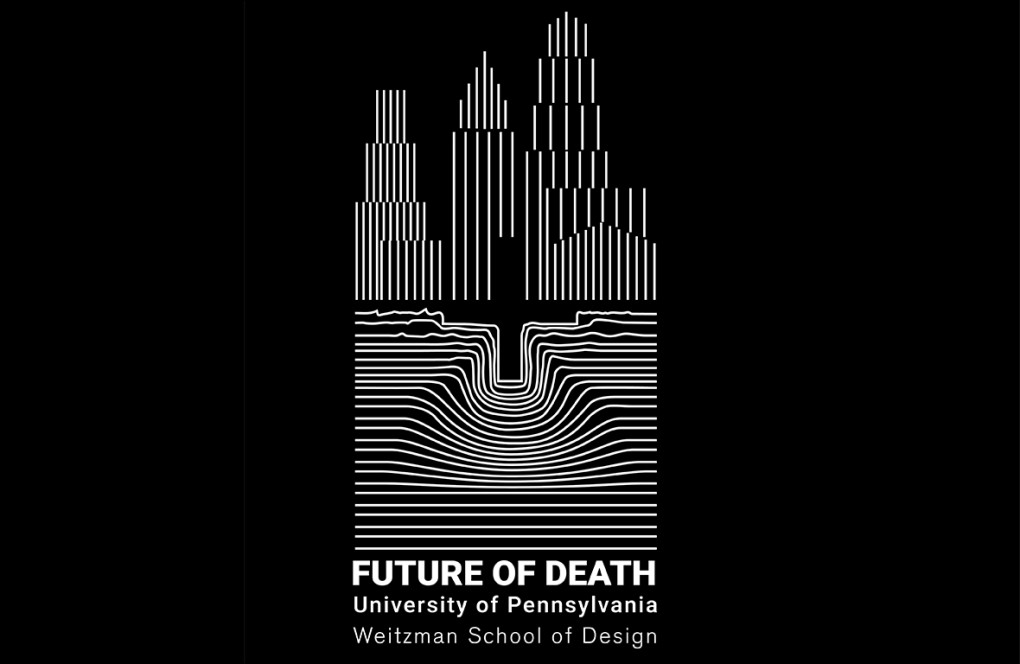


In collaboration with the University of Pennsylvania Stuart Weitzman School of Design, Karres en Brands organizes the Future of Death Studio. Together with a group of 12 exceptional students, the studio dives into contemporary burial culture and its changing character in light of global trends and personal preferences. The studio will be given over two fall semesters. The first studio was given in 2019, the one in 2020 was unfortunately postponed due to Covid-19. The results of the first studio are collected in the Catalogue of Death, showing designs, typologies, studies, rituals, uses and examples. The results of the second studio will be added to form the Atlas of Death.
The one certainty we have is that we are going to die. As the generation of baby boomers is expected to reach this final milestone between 2024 and 2042, the issue of death becomes more and more a planning challenge. For example, if all 76 million American baby boomers are to be buried in standard burial plots, it would require roughly 330 km2 of pure grave space, without factoring in infrastructure, planting etc. That’s the size of Las Vegas. This provokes the question of what is the future of death and how we will be buried and remembered.
The 21st century is the age of the city. The majority of the world population lives in cities and this number is only expected to grow. By 2050 the UN predicts as much as 80% of the global population will live in urban environments. At the same time, the city is the main battleground against the impact of climate change. Issues such as heat island effect, water management, energy, and resource production become now more than ever an urban problem. It is probably for the first time in history that cities are tackling more issues than they can spatially afford to. The city of today is therefore desperately reinventing itself, shifting and combining uses normally disassociated in order to generate more space.

Maybe even more relevant, cemeteries are mirrors of our society; they represent the relation between the collective and the individual, the social relations of that moment, the current perception of nature, the accustomed way of burial and the developments in the field of architecture, design and landscape architecture. And in every part of the world it is different, depending on culture, religion, practical necessities, economics etc. Making it not only a mirror of society but also a catalogue of culture and anthropology. The rituals surrounding death used to be defined by the religion of your community and rank in society. Now, society has become more equal but at the same time more diverse, opening the discussion on how cemeteries should adapt according to those societal changes.
Despite its spatial potential and potential as a reflection of the current state of our cultures, cemeteries have always been a place for the dead and the gardener. Even with high urban dynamics on the other side of the gates, cemeteries remained green holes in the city. Traditions, religion and memories governed the grounds and provided a sacred status to the graves. These low dynamic spaces in the city developed at a whole different pace than their surroundings, leaving cemeteries as an untapped resource in the search for space in the city.

In the Future of Death Studio, we explore the renewed role and meaning of cemeteries in a changing societal and urban context, we rethink the rituals of death and reflect on the sublime nature that is often part of these spaces. What value do our cemeteries have in relation to urbanization, climate change and green structures in the city? How can cemeteries become part of the urban fabric and urban life? If cemeteries are the mirror of society, how can we reflect our modern views in these historical spaces?
As part of the research, we visited Dutch cemeteries with the students. The Dutch Death tour, as we called it, brought the team to many different concepts of burial grounds on all different landscape types throughout the country: New town cemeteries just behind the dikes of Flevoland, the first fully Islamic cemetery in the country in a wet polder landscape, military honor field on high sandy forests and a natural burial ground in the cultural-historic landscapes of the Veluwe Nature Reserve. Filled with a whole new framework for their thoughts, the students returned to Philadelphia.
The research and design from the 2019 Future of Death studio are collected in the catalogue of Death. The students used their designs to focus on the experiential, intangible layer that makes a cemetery such a different place than anything else. Part of the final product was to translate this atmosphere into a model and a short animation. Some of the work can be seen below.

| Location. | Pennsylvania, United States |
|---|---|
| Assignment | Design studio at University of Pennsylvania, Weitzman School of Design |
| Design | 2019 - 2021 |
| Status | Completed |
| Client | University of Pennsylvania, Weitzman School of Design |
| Copyright images | Student work |